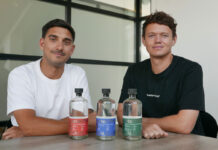Trade can make the most of category in growth, say producers and suppliers
WITH sales volumes climbing year-on-year, energy drinks continue to be an on-trade success story.
But although the category overall seems to be going from strength to strength, there is still more licensees can do to capitalise on and grow sales, say drinks firms.
Alan Hay, on-trade controller for AG Barr, distributor of energy drink brand Rockstar, described energy drinks as “the fastest growing category in the on-trade”, suggesting this was a reflection of trends found in the retail sector “where big can flavours are driving growth”.
“If licensees want to take advantage of this wider trend, they need to give energy drinks the space they deserve,” said Hay.
“In particular, they need to offer more flavoured energy to offer consumers the choice they are looking for.”
Mike Swingwood, commercial brand manager for Monster, said publicans should offer “choice and diversity” if they are to take full advantage of the category’s popularity.
“As well as standard and popular drinks offerings, operators should look to the versatility and different flavours that a product like Monster can offer to customers,” said Swingwood.
Publicans who take the initiative could reap the rewards, according to Swingwood, who said there was “great scope” for operators to “capitalise on this growth by developing their own energy drinks combinations, as well as serving an energy drink on its own”.
An increased focus on quality throughout the trade has also had an impact on energy drinks, said Paul Dempsey of Gloworm Drinks, who highlighted a “trend for smarter bars with more sophisticated menus”.
He said that cocktails, in particular, have become a focus for Gloworm in Scotland, with the brand being marketed as a premium mixer and cocktail ingredient.
“Gloworm, developed through thorough and sustained analysis and market insights, knows that in order for energy drinks to maintain their relevance, they have to update themselves to fit the current consumer requirements and continue to elevate and grow the category,” Dempsey told SLTN.
The changes in the energy category reflect a wider shift in consumer behaviour, said David Willey, trade communications manager at Red Bull.
Willey suggested consumers have become “more diverse” in both what they drink and where they go.
“They are looking for a night out in a venue that offers something more than just a place to drink and meet friends,” said Willey, adding that bar staff have an important role to play in influencing customers’ purchase decisions.
“The thirst for something new has emphasised the importance of bar staff and communications; the majority of consumers want to be offered recommendations or look at a menu for inspiration,” said Willey.
And although the energy drinks category has been performing well, Willey reminded operators that growing the category in bars is still about “getting the basics right”.
“This begins with the perfect serve, which is a full cold can served over the bar, into a glass with ice and a wedge of lime,” he said.
“It is one of the fundamental elements in outlet in order to drive sales and value into the category.”
Visibility was also highlighted by Willey as another way in which publicans could increase sales and improve margins.
“It is important that the cans are visible in the bar so that customers know they are available,” he added.
“Place higher margin products like Red Bull on the top shelf of the fridge or go for a branded cooler to maximise visibility.”

[hr]
Energy levels rise
• Energy drinks annual volume sales reached an estimated 528 million litres.
• Energy drink category worth an estimated £1.28 billion across UK on and off-trades.
• From 2008-2013, the total UK energy drinks category grew 65% by value and 50% by volume.
• Energy drink use predicted to rise 9% by 2017 amongst those aged 25-35.
• 42% reported using energy drinks with 15% of these consuming once per week or more.
• 70% of sports and energy drinks users would like to see a greater variety of healthier variants.



















